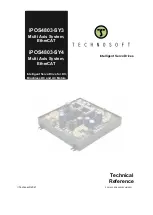
2021/04/17 23:32
1/18
Reconfigurable Laser Servo
Product Manuals - https://www.vescent.com/manuals/
Fig. 1: D2-125
Reconfigurable Laser
Servo
Model No. D2-125
Document Revision: 4.1
Document Last Updated on 2021/03/02 17:06
and
prior to operating the
Reconfigurable Servo.
Quick start for D2-125.
D2-125 web page.
Description
The D2-125 Reconfigurable Laser Servo contains a tunable PI
2
D loop filter for tight locking to an error
signal. The error signal is either an amplified version of the Error Input signal (side-lock mode) or an
amplified version of a demodulated Error Input (optional peak-lock mode). In both modes, a DC Offset
is summed to the error signal, allowing the user to select the zero-crossing and thus the lock point.
The error signal can also be inverted via a front-panel switch. Additionally, the Laser Servo has an
internal ramp generator for sweeping the output and computer control functionality to make and
break lock and directly control the output voltage.
The main component in the Reconfigurable Laser Servo is the PI
2
D loop filter, which means that the
feedback has standard proportional (P), integral (I), and differential (D) feedback with a second
integral feedback (I) providing the PI
2
D transfer function. The double integration is used to boost gain
at low frequencies. With integrator frequencies tunable from 2 MHz down to 10 Hz, the Laser Servo
can be optimized to a wide variety of plants and servo loops. With the Peak Lock option, the Laser
Servo can demodulate a provided 4 MHz dither signal to enable slope-detection for locking to signal
minima and maxima. The Laser Servo can be used to lock a laser's current or PZT to an
interferometer or an optical transition. With peak-lock, the Laser Servo can perform Pound-Drever-Hall
(PDH) locking to an optical cavity. The Reconfigurable Laser Servo uses basic voltage inputs and
outputs. As a result, it can be used with lasers or with any voltage-tunable device with an error signal.
The Laser Servo can be unlocked by a computer (via TTL control) to jump the output voltage to a set
voltage difference from the current lock point, or to a specific voltage. This feature can be used to
jump the laser frequency a known distance away and then relock to the original or a new lock point
frequency. This feature can be used for auto-locking or relocking routines.
The Laser Servo has an internal sweep generator to sweep the laser frequency prior to lock.

































